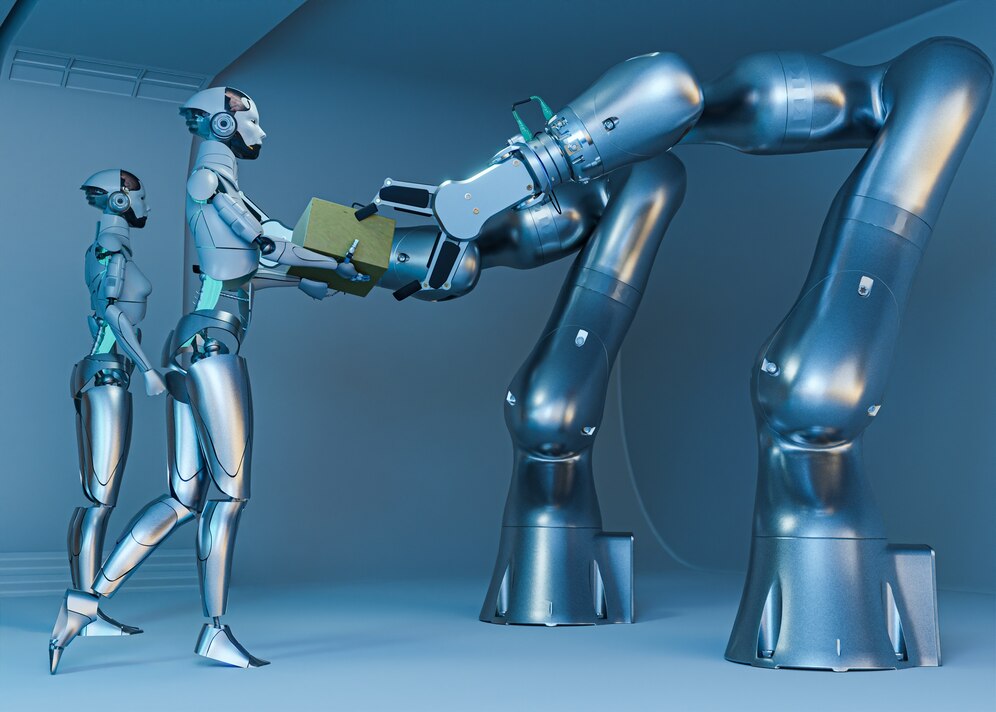
The Unstoppable Force of Technology: A Glimpse into the Future

In the modern world, the influence of technology cannot be overstated. It has become an integral part of everyday life, transforming every facet of society, from communication to healthcare, education, and even our environmental interactions. Technology is no longer just a collection of tools; it is the engine driving change in both individual lives and entire industries. It shapes the way we live, work, and even think.
The Evolution of Communication
Arguably, one of the most profound impacts of technology has been on communication. A few decades ago, sending a letter or making a long-distance call was considered a significant effort. Today, technology enables instant communication across the globe. Mobile phones, the internet, and social media have reduced the barriers of distance, making real-time interaction possible. Video calls have become a norm, and collaboration tools like Slack, Zoom, and Microsoft Teams ensure that teams and individuals can work together without ever being in the same room.
The rapid expansion of digital communication technologies has fostered a new globalized world where individuals and organizations can easily share information, collaborate, and form connections that would have been impossible in the pre-digital age. At the same time, however, it has raised concerns about the decline of face-to-face interactions and the growing dependency on digital platforms for communication.
Healthcare: A New Era of Possibilities
The realm of healthcare has also seen a radical transformation due to technological advancements. The ability to diagnose diseases with greater accuracy, the rise of robotic surgeries, and the proliferation of wearable health monitors have dramatically improved patient outcomes. In particular, the integration of artificial intelligence into healthcare has revolutionized diagnostic procedures. AI-driven algorithms can now analyze medical data faster and more accurately than ever, identifying patterns and making predictions that help doctors make more informed decisions.
Moreover, the growth of telemedicine has expanded access to healthcare for millions. Rural and underserved populations now have the ability to consult with medical professionals remotely, breaking down geographic barriers and offering greater convenience. Technology has also given rise to personalized medicine, where treatments are tailored to the genetic makeup of individuals, improving the efficacy of therapies.
Wearable technologies, such as fitness trackers and smartwatches, have empowered individuals to take charge of their own health. By tracking steps, heart rates, and sleep patterns, these devices offer continuous feedback, motivating users to stay active and healthy. The future of healthcare, driven by further advances in biotechnology and AI, holds the promise of even more significant breakthroughs that could enhance longevity and quality of life.
Education in the Digital Age
Technology has also profoundly altered the educational landscape. In classrooms, students now have access to vast amounts of information at their fingertips. Educational apps, digital textbooks, and online courses have democratized learning, allowing individuals to study subjects that interest them at their own pace, irrespective of location.
Moreover, new technologies like virtual reality (VR) and augmented reality (AR) have made learning more immersive. Students can now explore historical events, navigate the human body in 3D, or witness scientific phenomena firsthand through these immersive technologies. These advancements have not only made learning more engaging but also more effective, enhancing retention and understanding.
Despite the tremendous potential of technology in education, challenges remain. The digital divide continues to affect students in low-income areas who may lack access to the devices or internet connectivity necessary for digital learning. Addressing these disparities is critical to ensuring that technology’s benefits reach all students equally.
Automation and the Workforce
Technology’s influence on the workforce has been profound, as automation and artificial intelligence continue to reshape industries. In manufacturing, automation has streamlined processes, reducing the need for manual labor in repetitive tasks. Robots now assemble products with precision, leading to increased efficiency and productivity. However, this shift has also sparked concerns about job displacement, with many fearing that the rise of automation could lead to significant unemployment in certain sectors.
On the flip side, technology has also created new job opportunities in fields like software development, data analysis, cybersecurity, and artificial intelligence. The demand for tech-savvy professionals is growing rapidly, and individuals are increasingly expected to be familiar with digital tools and platforms in order to succeed in the modern job market. As a result, there is a greater emphasis on the need for continuous learning and upskilling to adapt to the changing demands of the workforce.
The Environmental Impact of Technology
While technology has brought about numerous benefits, it has also posed significant challenges to the environment. The rapid expansion of digital devices and the rise of data centers have increased energy consumption. The production of electronic devices and the extraction of raw materials for their creation have environmental consequences, including pollution and resource depletion. The disposal of outdated electronics, which often contains harmful substances, also contributes to environmental degradation.
However, technology also offers solutions to some of the most pressing environmental challenges. Renewable energy technologies, such as solar and wind power, are rapidly advancing, offering alternatives to fossil fuels. Smart grids, powered by IoT technology, enable more efficient energy distribution and management. Electric vehicles are gradually replacing traditional gasoline-powered cars, reducing greenhouse gas emissions and air pollution. Furthermore, advancements in precision agriculture are helping farmers use resources more efficiently, reducing waste and conserving water.
The future of technology and the environment lies in finding a balance between progress and sustainability. Innovations such as biodegradable electronics and energy-efficient devices may offer a way forward, reducing the environmental impact of technology while still allowing for the benefits it brings.
Ethical Considerations: The Dark Side of Progress
As technology advances, it brings with it new ethical dilemmas. One of the most pressing concerns is the role of artificial intelligence and automation in decision-making. While AI has the potential to improve efficiency in fields like healthcare, finance, and criminal justice, there are significant concerns about bias and accountability. AI systems are only as unbiased as the data they are trained on, and biased algorithms could lead to unfair outcomes, perpetuating societal inequalities.
Another ethical concern is the growing intrusion into privacy. With the advent of the Internet of Things (IoT), personal data is constantly being collected from various devices, raising concerns about data security and privacy. The unauthorized use of personal data by companies, governments, and malicious actors poses a significant risk to individuals’ privacy and autonomy. Addressing these concerns requires robust regulations, transparency, and accountability from both private and public entities.
The Future of Technology: Endless Possibilities
Looking ahead, the possibilities offered by technology are virtually limitless. Breakthroughs in quantum computing, biotechnology, and AI promise to unlock new frontiers in science and innovation. Quantum computers, which leverage the principles of quantum mechanics, have the potential to solve complex problems that are currently unsolvable by traditional computers, opening new avenues in cryptography, material science, and more.
In biotechnology, innovations in gene editing and regenerative medicine could offer solutions to previously incurable diseases, potentially extending life expectancy and improving quality of life. AI and machine learning will continue to evolve, transforming industries, creating smarter systems, and driving efficiencies on an unprecedented scale.
However, the future of technology is not without its challenges. The rapid pace of innovation presents ethical, environmental, and societal questions that must be addressed. The responsibility lies with governments, companies, and individuals to ensure that technological advancements are used for the collective good and are aligned with the values of fairness, equity, and sustainability.
Conclusion
Technology is a double-edged sword, capable of both great progress and significant disruption. Its influence is felt across every aspect of society, transforming industries, economies, and personal lives. As technology continues to evolve, it is imperative to navigate its potential with care and consideration, ensuring that it serves humanity’s best interests while addressing the ethical, environmental, and societal challenges it presents. The future of technology is bright, but it is essential to shape its trajectory with thoughtful reflection and a commitment to responsible innovation.


